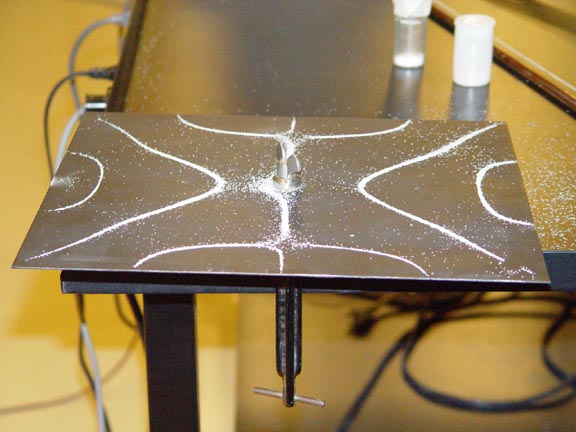A.2.11 Chladni Patterns
Exquisite patterns emerge from salt scattered on a metal plate which is stroked with a bass fiddle bow, illustrating two dimensional vibration. A video camera will enlarge the patterns for the class to see in the Knudsen lecture halls.
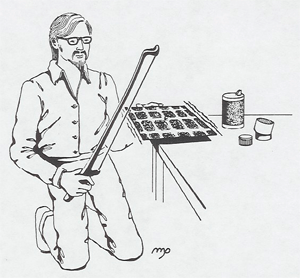
To form patterns, hold your fingers firmly on the nodes indicated, but try to localize them as much as possible. Use plenty of rosin on the strings and bow firmly. You are bowing on anitnodes; as you go from pattern to pattern, bow on a node of the previous pattern. That way you eliminate the previous one. a well bowed pattern gives a pure tone. And finally, practice, practice, practice!
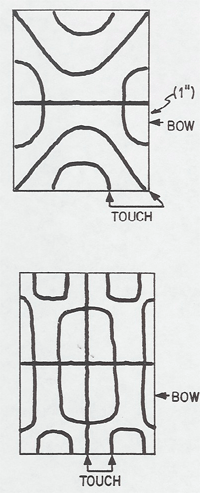
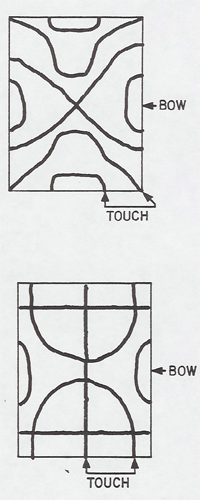
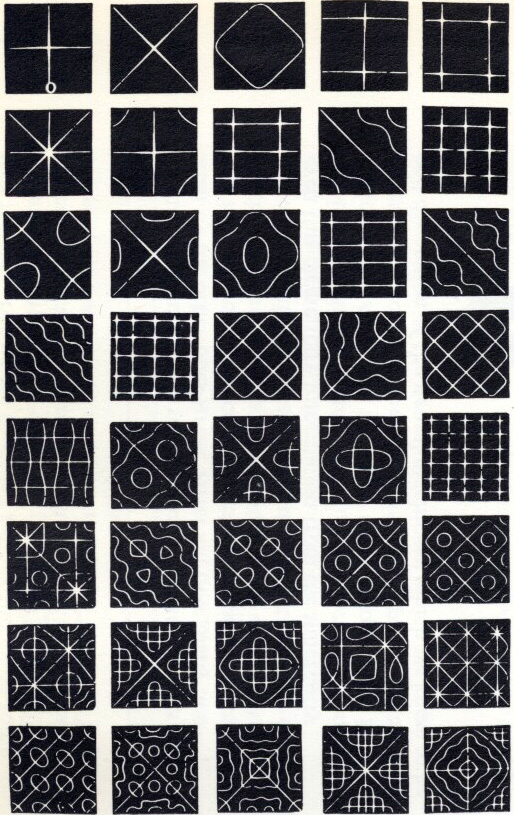
Chladni patterns can also be formed by using circular or rectangular metal plates on a mechanical driver controlled by a signal generator. This method avoids having to practice your bowing. The patterns are now different since they have antinodes at the center (which is being vibrated) rather than nodes with the center rigidly attached and the edge bowed.
